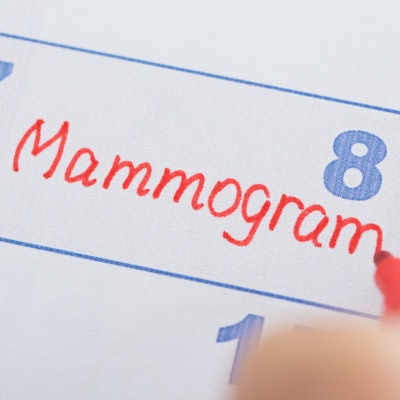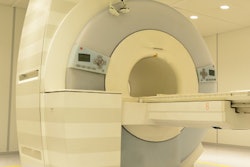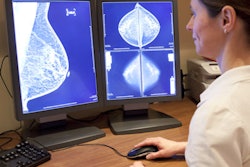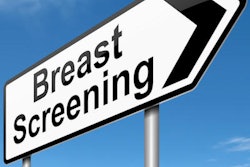
New research has shown that the number of women undergoing mammography screening in Iran is far from satisfactory. While breast screening can save lives, the study has highlighted significant gaps in the country's screening strategy for safeguarding its target population.
 Samira Barjasteh.
Samira Barjasteh."The development age of breast cancer in Iran is 10 years earlier than in developed countries, and 70% of breast cancers are diagnosed in the advanced stage leading to early death," said Samira Barjasteh, a doctoral student at the Nursing and Midwifery School at Tehran University of Medical Sciences. "Breast cancer screening factors have been little studied in Iran; therefore, we wanted to establish the determinants of mammography screening -- and in an effort to support women's human rights, promote screening for early diagnosis and prevention of death across this vulnerable group."
The study found that only 46 (12%) of the 384 women surveyed had undergone a mammography examination and that income, accessibility of facilities, and personal outlook played a major role in the process (Asian Pacific Journal of Cancer Prevention, April 2018, Vol. 19:4, pp. 997-1003).
Barjasteh was a co-author of the study, of which the key findings are shown below:
- Total number of women: 384 (100%)
- Women undergoing mammography: 46 (12%)
- Women never having had a mammogram: 338 (88%)
- Employed: 116 (30.2%)
- Homemaker: 268 (69.8%)
- Disadvantaged economically: 95 (34.7%)
- Middle income: 174 (45.3%)
- Economically advantaged: 115 (29.9%)
Study group
The researchers selected a total of 384 women across 10 Urmia health centers. Inclusion criteria included being between the ages of 30 and 60, literacy, and ability to communicate verbally. Four of the centers were in richer areas, three were in middle economic areas, and three were based in poorer areas.
The team used multistage sampling and collected data using a standard checklist for demographic data and questionnaire for mammography screening determinants. The researchers analyzed the data using SPSS software version 20 and descriptive and inferential statistic tests (chi-square test and independent t-test), with a p-value of less than 0.05 considered significant.
Significant findings
The questionnaire included 34 questions, falling into seven main themes: beliefs, accessibility, knowledge, cue to action, emotions, self-care, and lifetime goals. For six of these themes, respondees chose from a Likert scale that included the following answers: completely agree, agree, no idea, disagree, and completely disagree -- with points attributed according to the answer. Questions about knowledge earned one point for a correct answer, and zero points for missing or incorrect answers.
The study revealed that 12% of the women studied had undergone mammography and 88% hadn't. The researchers found significant correlations with income, menopause status, a history of breast cancer in close relatives, and inaccessibility. There was also a significant correlation with beliefs, knowledge, cues to action, emotions, self-care, and having priorities (life goals). The team found no significant correlations with age at marriage, age at first delivery, number of children, duration of breastfeeding, status of residency, education, marital status, occupation, history of breastfeeding, age at menopause, or past breast problems.
| Key mammography determinants in Iran | |
| p-value | |
| Income | p = 0.03 |
| Menopause status | p = 0.01 |
| Inaccessibility | p = 0.006 |
| History of family breast cancer | p = 0.001 |
| Knowledge | p = 0.001 |
| Beliefs | p = 0.001 |
| Cue to action | p = 0.001 |
| Self-care | p = 0.001 |
| Life goals | p = 0.001 |
| Emotions | p = 0.001 |
Demographics
The demographics sheet contained 19 questions about family, social factors (age, place of residence, educational level, marital status), economic status (occupation, income, household size), and risk factors (history of breast cancer, history of cancer in first degree relatives, history of breastfeeding, and menopause).
From the sample, 70% (269 women) were from urban health centers and 30% (115 women) came from rural health centers. Furthermore, 45.1% of the women had a diploma, and 4.9% of them were illiterate. Also, 66.3% (256) were married, and 68.5% (263) of them had a history of breastfeeding. The majority, (69.5%, 267 women) had not yet reached menopause.
Nearly 30% (115 women) had visited their doctor when faced with a breast problem, while 20% (77) had avoided visiting a doctor, despite knowing there was a problem, and 50% (192) had no history of a breast problem. History of breast cancer in close relatives was reported by nearly 17% (65) of the subjects. The surveyed women reported that doctors and health center midwives were the biggest sources of encouragement and information about screening, followed by media and the internet, and then friends, other people, and finally books and magazines.
Limitations
The authors noted the small sample size, low number of health centers surveyed in Urmia, and the lack of similar studies in Iran as potential limitations of the current study, adding that further studies are needed to gain additional information about breast cancer mammography screening determinants.
The results of this study revealed the need for reproductive health specialists to focus on teaching and promoting screening methods to increase the frequency of mammography and other breast cancer screening tests. However, solely relying on education was not effective, they warned. Experts also needed to identify barriers and remove them, goals that could not be achieved without the development of long-term and ongoing strategies.
"One such barrier is the cost of mammography, which needs to be looked at," Barjasteh noted. "It is necessary to encourage women to go for screening tests, and for this to happen, there needs to be a major change in behavior that should not be hindered by personal or socioeconomic factors."



















